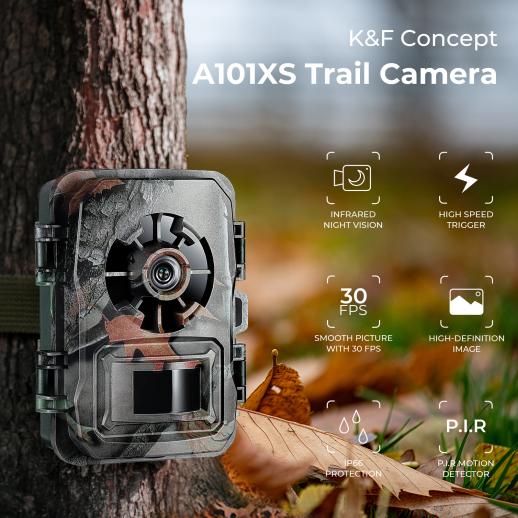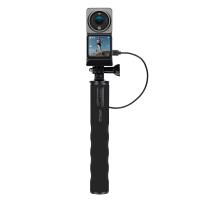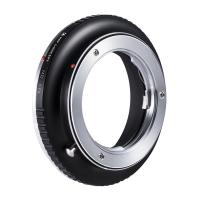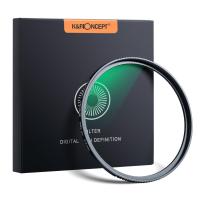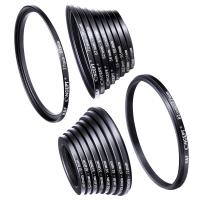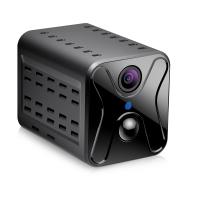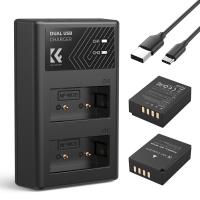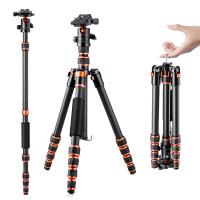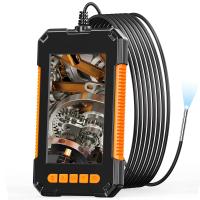Capture Perfect Trail Camera
Buy 3 Get 18% OFF
Buy 5 Get 20% OFF
Buy 3 Get 18% OFF
Buy 5 Get 20% OFF
- * KF35.143=KF35.064+KF28.0011+KF42.0013 Lightweight and portable for easy installation and transportation:This trail camera weighs only 185g without battery, making it easy to carry and install in any location.
- * Durable and weather-resistant for outdoor use:With an IP66 dust and waterproof rating, this camera can withstand harsh weather conditions and outdoor environments.
- * Clear and high-quality display for easy viewing:The 2.0" IPS LCD display with 320×240(RGB) DOT resolution provides clear and detailed images for easy viewing.
- * Low power consumption for long-lasting use:The sleeping current of approximately 0.20mA ensures that the camera has a long battery life and can be used for extended periods of time.
- * High-resolution photos and loop recording for optimal performance:The 8M photo resolution of 3840x2160 and support for loop recording ensure that this camera captures high-quality images and videos for optimal performance.
Buy 3 Get 18% OFF
Buy 5 Get 20% OFF
A perfect trail camera is a device used to capture images and videos of wildlife or other outdoor activities. It is designed to be durable, weather-resistant, and easy to use. The camera should have a high-quality lens and sensor to capture clear and detailed images, even in low light conditions. It should also have a fast trigger speed and a long battery life to ensure that it can capture images quickly and last for extended periods without needing to be recharged. Additionally, a perfect trail camera should have a large storage capacity and be compatible with various memory cards. It should also have a user-friendly interface and be easy to set up and operate. Finally, a perfect trail camera should be discreet and blend in with its surroundings to avoid detection by wildlife or potential thieves.

Application Scenarios:
1. Wildlife Observation: The perfect trail camera can be used to capture wildlife in their natural habitat. It can be set up in a forest or a park to capture images and videos of animals such as deer, bears, and birds. The camera can be programmed to take pictures at specific intervals or when motion is detected. This can be useful for researchers studying animal behavior or for nature enthusiasts who want to capture images of wildlife.
2. Home Security: The perfect trail camera can also be used for home security. It can be set up outside the home to capture images and videos of any suspicious activity. The camera can be programmed to send alerts to the homeowner's phone when motion is detected. This can be useful for homeowners who want to keep an eye on their property when they are away.
3. Hunting: The perfect trail camera can be used by hunters to track game. It can be set up in a hunting area to capture images and videos of animals such as deer, elk, and moose. The camera can be programmed to take pictures at specific intervals or when motion is detected. This can be useful for hunters who want to track the movement of game in a particular area.
4. Outdoor Sports: The perfect trail camera can be used to capture images and videos of outdoor sports such as mountain biking, skiing, and snowboarding. It can be mounted on a helmet or a bike to capture the action from the athlete's perspective. This can be useful for athletes who want to review their performance or for coaches who want to analyze their athletes' technique.
5. Construction Site Monitoring: The perfect trail camera can be used to monitor construction sites. It can be set up to capture images and videos of the construction process. The camera can be programmed to send alerts to the project manager's phone when motion is detected. This can be useful for project managers who want to keep an eye on the progress of the construction site.
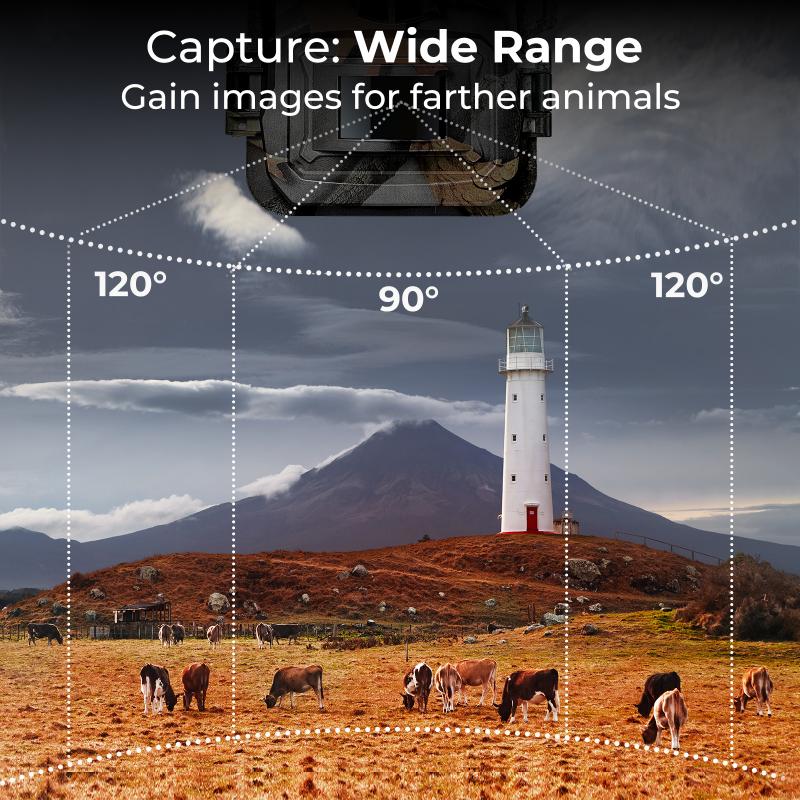
Related technologies:
1. High-resolution image sensors: The latest trail cameras are equipped with high-resolution image sensors that capture clear and detailed images of wildlife. These sensors have a higher pixel count, which means that they can capture more details in the image.
2. Advanced motion detection: Trail cameras now come with advanced motion detection technology that can detect even the slightest movement. This ensures that the camera captures images of wildlife as soon as they enter the frame.
3. Wireless connectivity: Many trail cameras now come with wireless connectivity options, such as Wi-Fi or Bluetooth. This allows users to remotely access the camera's images and settings, making it easier to manage and monitor the camera.
4. Long battery life: The latest trail cameras are designed to have a long battery life, which means that they can stay in the field for longer periods of time without needing to be recharged. This is especially important for users who want to monitor wildlife in remote areas.
5. Weather-resistant design: Trail cameras are often used in outdoor environments, which means that they need to be able to withstand harsh weather conditions. The latest trail cameras are designed to be weather-resistant, with features such as waterproofing and durable construction materials. This ensures that the camera can continue to function even in extreme weather conditions.

Maintenance:
1. Regularly clean the lens: The lens is the most important part of the camera, and it needs to be kept clean to ensure that the images captured are clear and sharp. Use a microfiber cloth to gently wipe the lens and remove any dirt or smudges.
2. Check the battery life: Make sure to check the battery life of the camera regularly, and replace the batteries as needed. Low battery life can cause the camera to malfunction or stop working altogether.
3. Protect the camera from the elements: Trail cameras are often used in outdoor environments, so it's important to protect them from the elements. Use a waterproof case or cover to protect the camera from rain, snow, and other weather conditions.
4. Test the camera regularly: Test the camera regularly to ensure that it is working properly. Take a few test shots and review the images to make sure that they are clear and sharp.
5. Keep the camera firmware up to date: Check for firmware updates regularly and install them as needed. Firmware updates can improve the camera's performance and fix any bugs or issues.
6. Store the camera properly: When not in use, store the camera in a cool, dry place. Avoid storing it in direct sunlight or in areas with high humidity, as this can damage the camera and reduce its lifespan.

Common problems:
Error 1: Blurry Images
Solution: Check if the lens is clean and free from any smudges or dirt. If it is dirty, clean it with a microfiber cloth. Also, make sure that the camera is stable and not shaking while taking the picture.
Error 2: Overexposed Images
Solution: Adjust the camera's exposure settings to a lower value. If the camera does not have manual exposure settings, try to avoid taking pictures in bright sunlight or use a lens hood to reduce the amount of light entering the lens.
Error 3: Underexposed Images
Solution: Adjust the camera's exposure settings to a higher value. If the camera does not have manual exposure settings, try to take pictures in well-lit areas or use a flash to provide additional light.
Error 4: Incorrect Focus
Solution: Check if the camera is set to autofocus or manual focus. If it is set to autofocus, make sure that the camera is focusing on the subject correctly. If it is set to manual focus, adjust the focus ring until the subject is in focus. Also, make sure that the camera is not too close or too far away from the subject.

Product parameters:
Fill light irradiation distance : 65ft/20m
Net weight : 185g without battery
Dust and waterproof rating : IP66
Photo resolution : 8M: 3840x2160
Number of IR fill lights : 2PCS infrared fill light; 940nm
Trigger photo speed : 0.3 seconds
Loop recording : Support
Timer function : 3 seconds - 24 hours
Sleeping current : Approx. 0.20mA
LCD display : 2.0" IPS 320×240(RGB) DOT
- All Reviews
- Image

